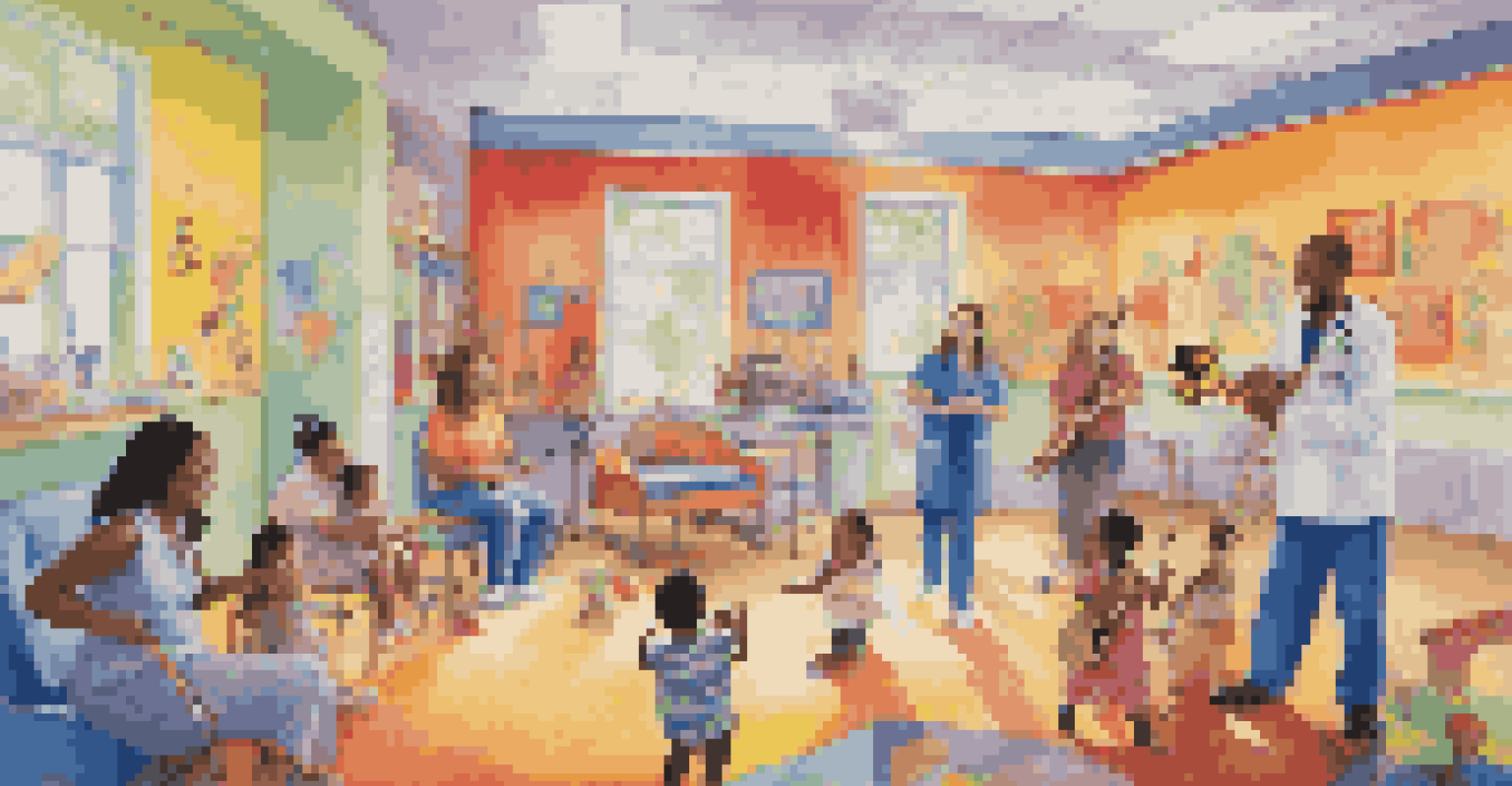The Role of Music in Enhancing Patient Engagement in Care

Understanding Patient Engagement in Healthcare
Patient engagement is the process where patients actively participate in their healthcare, leading to better outcomes. This engagement can take many forms, from asking questions to making informed decisions about treatment. The more involved patients are in their care, the more likely they are to adhere to treatment plans and improve their health.
Music can change the world because it can change people.
Research has shown that engaged patients tend to experience higher satisfaction levels and better health outcomes. When patients are invested in their care, they can communicate more effectively with healthcare providers. This two-way communication is crucial for creating a personalized and effective care plan.
Enhancing patient engagement isn't just about information; it's also about creating an environment where patients feel comfortable and motivated. This is where music can play a transformative role, influencing emotional well-being and fostering a more positive healthcare experience.
The Therapeutic Benefits of Music in Healthcare
Music therapy has been recognized for its therapeutic benefits, helping to reduce anxiety, pain, and stress in patients. The soothing effects of music can create a calming atmosphere that makes patients feel more at ease during their healthcare experiences. Various studies have demonstrated that patients who listen to music before, during, or after procedures report lower levels of discomfort.

In addition to alleviating anxiety, music can stimulate cognitive function and enhance memory recall. This is especially beneficial for older adults or those with cognitive impairments. By incorporating music into the care environment, healthcare providers can help patients feel more alert and engaged.
Engagement Improves Health Outcomes
Active participation in healthcare leads to better patient satisfaction and health results.
Moreover, music can serve as a bridge in communication between patients and caregivers. For example, when words may fail, a familiar song can evoke memories and emotions, helping to establish a connection that encourages dialogue and engagement.
Creating a Positive Environment with Music
The environment in which care is delivered significantly impacts patient engagement. Music can transform a clinical setting into a more inviting space, reducing the sterile, intimidating feel often associated with healthcare facilities. By curating playlists that cater to patient preferences, healthcare providers can create a more personalized experience.
Where words fail, music speaks.
When patients listen to music they love, it can elevate their mood and foster a sense of comfort. This positive emotional state can lead to increased willingness to engage in conversations about their care. For instance, a patient who feels relaxed and happy is more likely to ask questions and express concerns about their treatment.
Additionally, music can be used strategically during specific procedures to distract patients, making the experience feel less daunting. This simple yet effective method has proven to enhance patient comfort, ultimately leading to better engagement and cooperation with healthcare providers.
Music as a Tool for Patient Education
Music can also serve as a creative tool for patient education. By incorporating melodies and rhythms into educational materials, healthcare providers can make complex medical information more accessible and memorable. For example, jingles or catchy tunes can help patients remember medication schedules or important health tips.
This approach not only aids in information retention but also makes learning about health more enjoyable. Patients are more likely to engage with materials that are presented in a fun and interactive manner. The use of music in education can bridge gaps in understanding, ensuring patients are well-informed about their health.
Music Enhances Patient Comfort
Incorporating music into healthcare settings reduces anxiety and fosters a positive environment.
Moreover, engaging patients through music during educational sessions can create a more collaborative atmosphere. When patients feel included in their learning process, they are more likely to take ownership of their health and adhere to treatment plans.
Case Studies on Music's Impact in Healthcare
Numerous case studies highlight the positive impact of music on patient engagement in various healthcare settings. For instance, a hospital implemented a music therapy program for patients undergoing surgery, resulting in reduced anxiety levels and shorter recovery times. These outcomes demonstrate how music can enhance patient experiences and engagement.
Another study focused on pediatric patients found that incorporating music into their care routine improved their cooperation during treatments. Children who listened to their favorite songs were more likely to engage with healthcare staff and participate in their care actively. This shows how music can cater to different age groups and needs.
These case studies illustrate that music is not just a supplementary aspect of care; it can be a vital component of patient engagement strategies. By acknowledging the power of music, healthcare providers can create tailored approaches that resonate with patients and foster meaningful connections.
Integrating Music into Care Plans
To harness the benefits of music in patient engagement, it’s essential to integrate it into care plans effectively. Healthcare providers can work with music therapists to develop personalized music interventions that align with individual patient needs. This tailored approach ensures that patients receive the most benefit from the music being used in their care.
Additionally, healthcare facilities can create dedicated spaces for music listening or therapy, making it a routine part of the patient experience. For example, creating a quiet, comfortable room with instruments or a sound system can encourage patients to engage with music as part of their healing process.
Music Aids Patient Education
Using melodies makes complex medical information more accessible and enjoyable for patients.
Furthermore, training healthcare staff on the importance of music in patient engagement can help create a cohesive approach. When all members of the healthcare team are aware of the role music plays in improving patient experiences, they can actively incorporate it into their interactions with patients.
The Future of Music in Patient Care
Looking ahead, the integration of music into patient care is likely to expand as more research supports its benefits. Innovations in technology, such as music apps tailored for healthcare settings, are emerging, allowing patients to select their preferred music during treatment. This personal choice can enhance patient comfort and engagement.
Moreover, as healthcare continues to prioritize patient-centered care, the role of music will become increasingly significant. Providers will need to consider holistic approaches that address emotional and psychological needs, alongside physical health. Music can be a vital part of this holistic care model.

Finally, the growing recognition of the importance of mental health in overall well-being suggests that music will play a key role in future healthcare strategies. By fostering a deeper understanding of music's impact, healthcare providers can create environments that promote engagement, healing, and positive patient experiences.